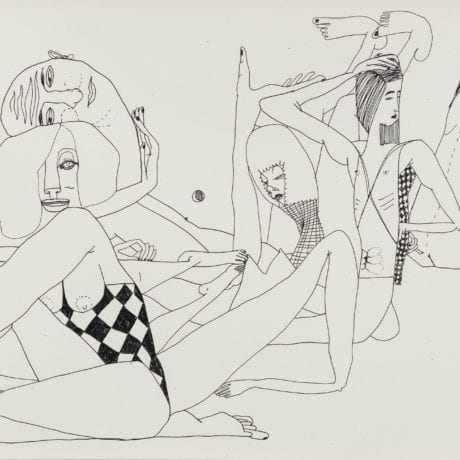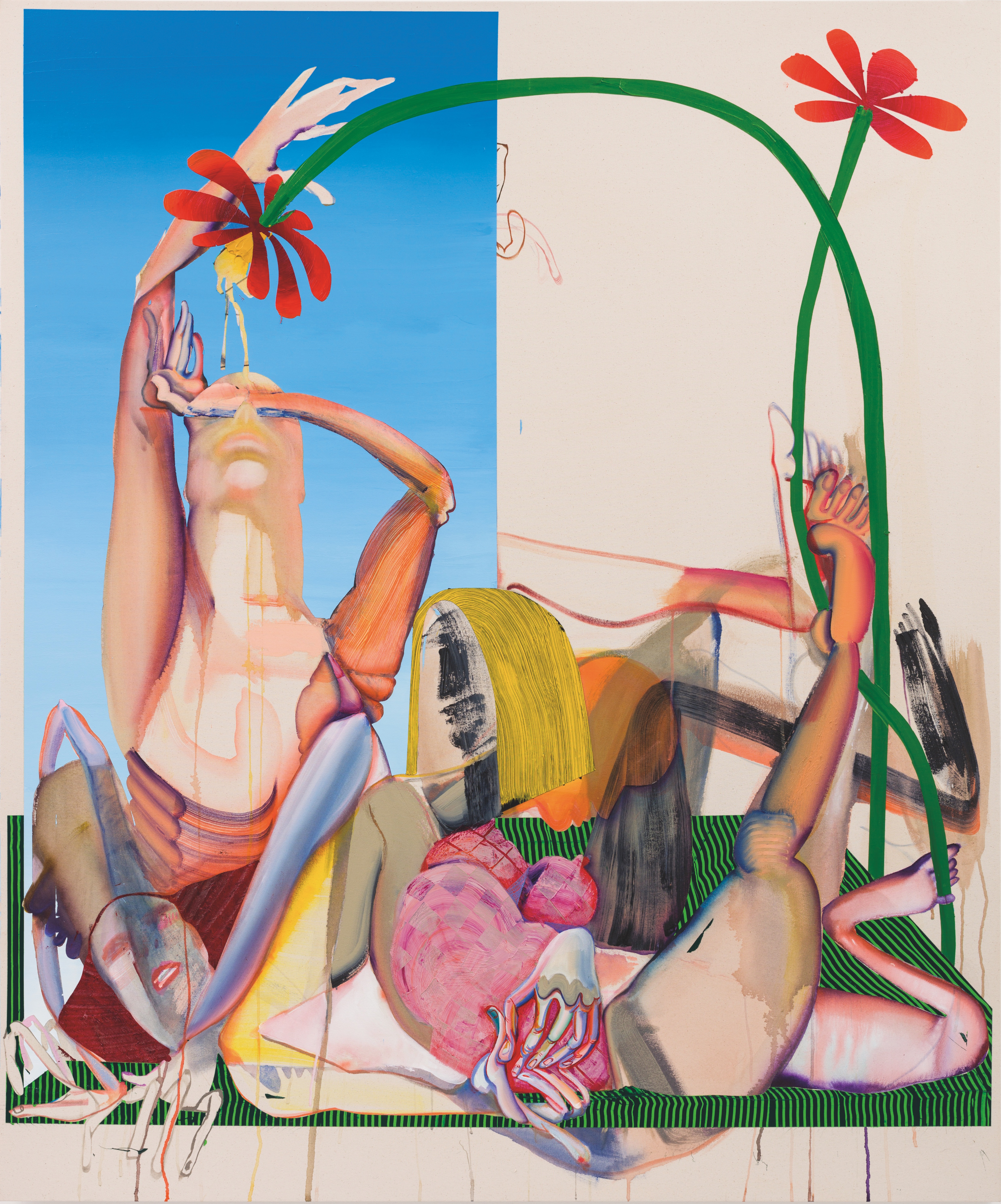
Christina Quarles is in her studio in Los Angeles. It’s 9am and it’s already busy: she’s got a photoshoot lined up after our interview, and soon she’s travelling to the UK to oversee the final stages of install at the Hepworth Wakefield, where she will have a solo exhibition opening in October—her first institutional solo show (though she’s no stranger to the museum: she’s had work up recently at the Hayward Gallery, London, New York’s New Museum, The Studio Museum, Harlem and the Hammer Museum in LA).
“A lot of identity in the US is based on how you look, how you present to white people in America”
Quarles was born in Chicago in 1985 to a black father and a white mother. Being from a mixed-race family, and identifying as queer, Quarles has always lived in state of ambiguity, compounded by the fact she is often identified by the outside world as white—she has felt she cannot fully claim whiteness or blackness. Given how common it is to grow up in a mixed family today, it is rare to find it discussed in the way Quarles does in painting. I closely relate to the disorienting, often uncomfortable atmosphere in Quarles’s large, textural canvases. I was born the same year as Quarles, to a brown father and white mother, and I am often identified as white.
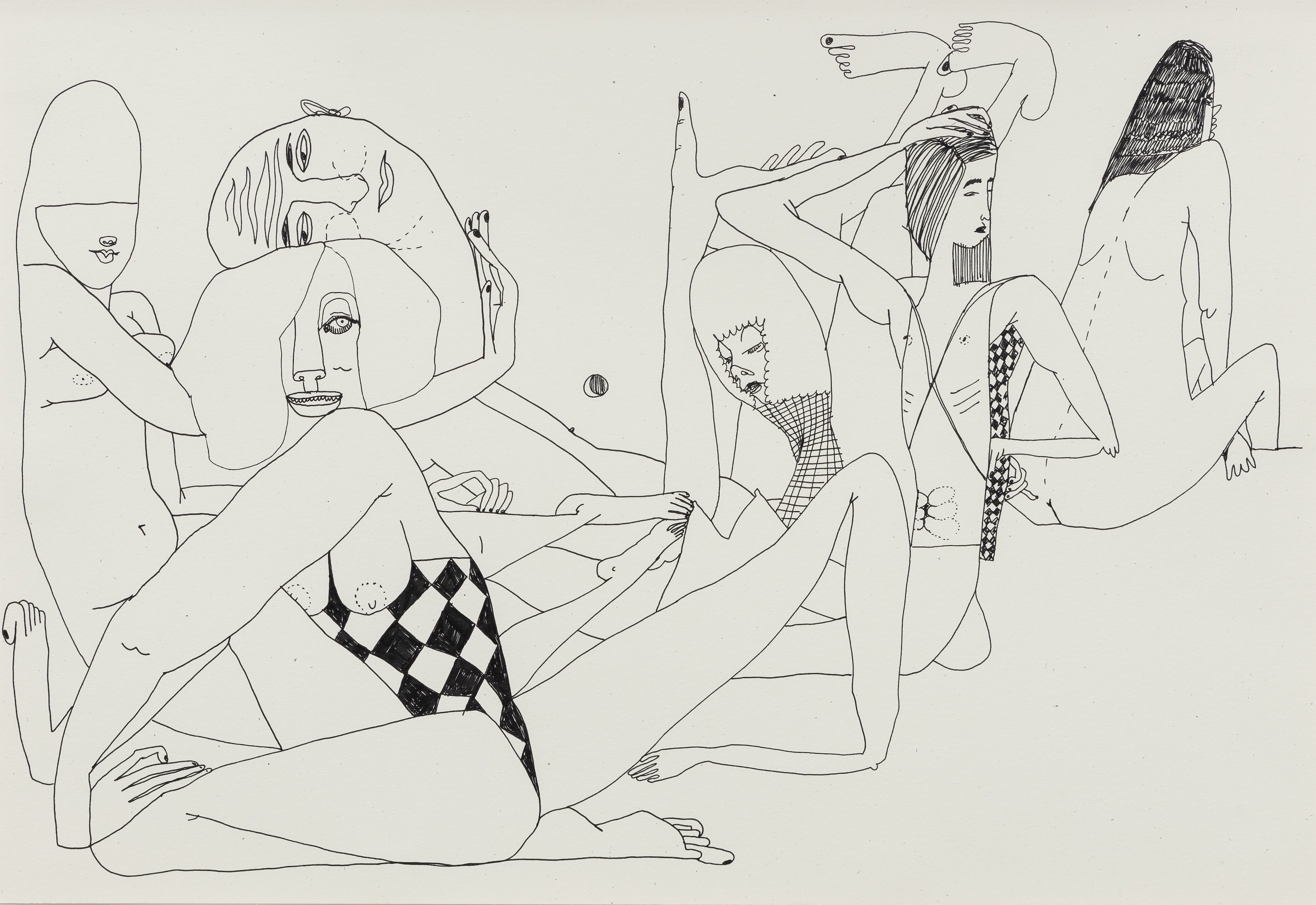
While the privileges of passing as white when you walk through the world can’t be denied, your family life doesn’t match the experiences of most white people. Being forced to constantly question your position, it can often end up feeling that you do not belong anywhere. Growing up, Quarles has felt most pain in places where people usually seek community and solidarity. “Those are the places I feel most othered.”
“A lot of identity in the US is based on how you look, how you present to white people in America. That is what constitutes racial identity in the US. My experience is complicated,” Quarles explains over the phone. “If you think of someone who is half white, half black, as in my case, there’s a sense that usually they look non-white, so they’re considered black. I often think of Barack Obama, who is the same mix as me. He’s called the first black President but he’s just as white as he is black. Whiteness maintains this sense of power by being this blank state.”
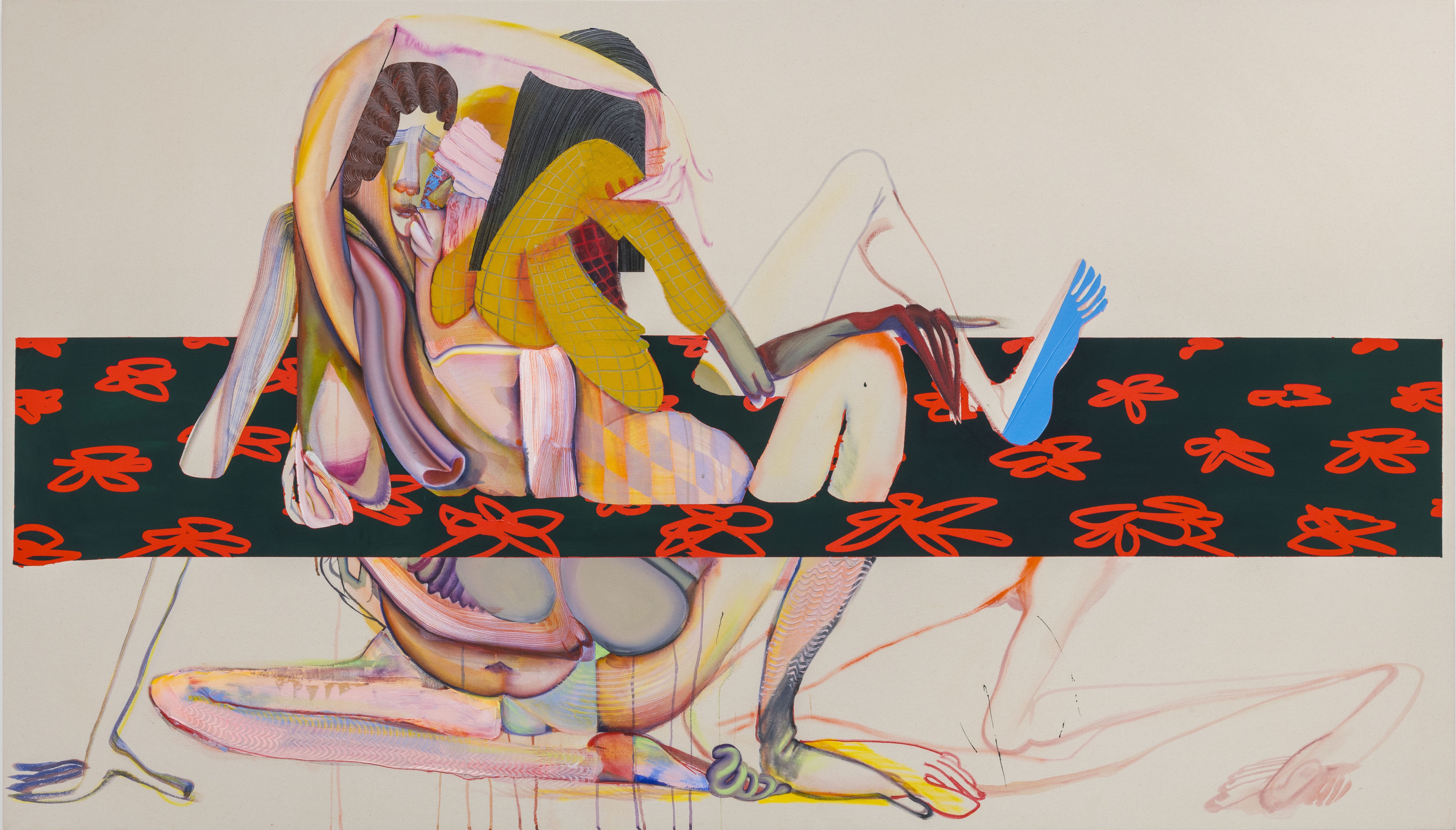 “None of the categories, to me, were quite right,” Quarles reflects, on the disconnect she has felt between the way the world perceives race and her own lived experience. “I’ve been motivated by the difficulty I have in summarizing my experience with race through language.”
“None of the categories, to me, were quite right,” Quarles reflects, on the disconnect she has felt between the way the world perceives race and her own lived experience. “I’ve been motivated by the difficulty I have in summarizing my experience with race through language.”
At Yale School of Art, where Quarles did her MFA, she went deeper into this through the medium of painting. “Painting can be very passive as a medium,” she tells me. “I’m always looking at ways to bring the viewer’s attention to what they’re looking at, to make them engage with the imagery as a construction—I want the viewer to be aware of their body in the space.” She began to use this approach on the canvas—where her fluid, amorphous figures struggle to find space within a frame that can hardly contain them. She also began to apply it to the way she installed her works. At the Hammer Museum, where she participated in Made in LA in 2018, she incorporated different perspective planes, patterns and colours to create a trompe l’oeil effect, with mirroring and punning between the work and the wall, back into the work. She employed a similar method at Art Basel, expanding across the wall. She’s planning to do something similar at the Hepworth, with its large windows that let slices of the Yorkshire countyside in.
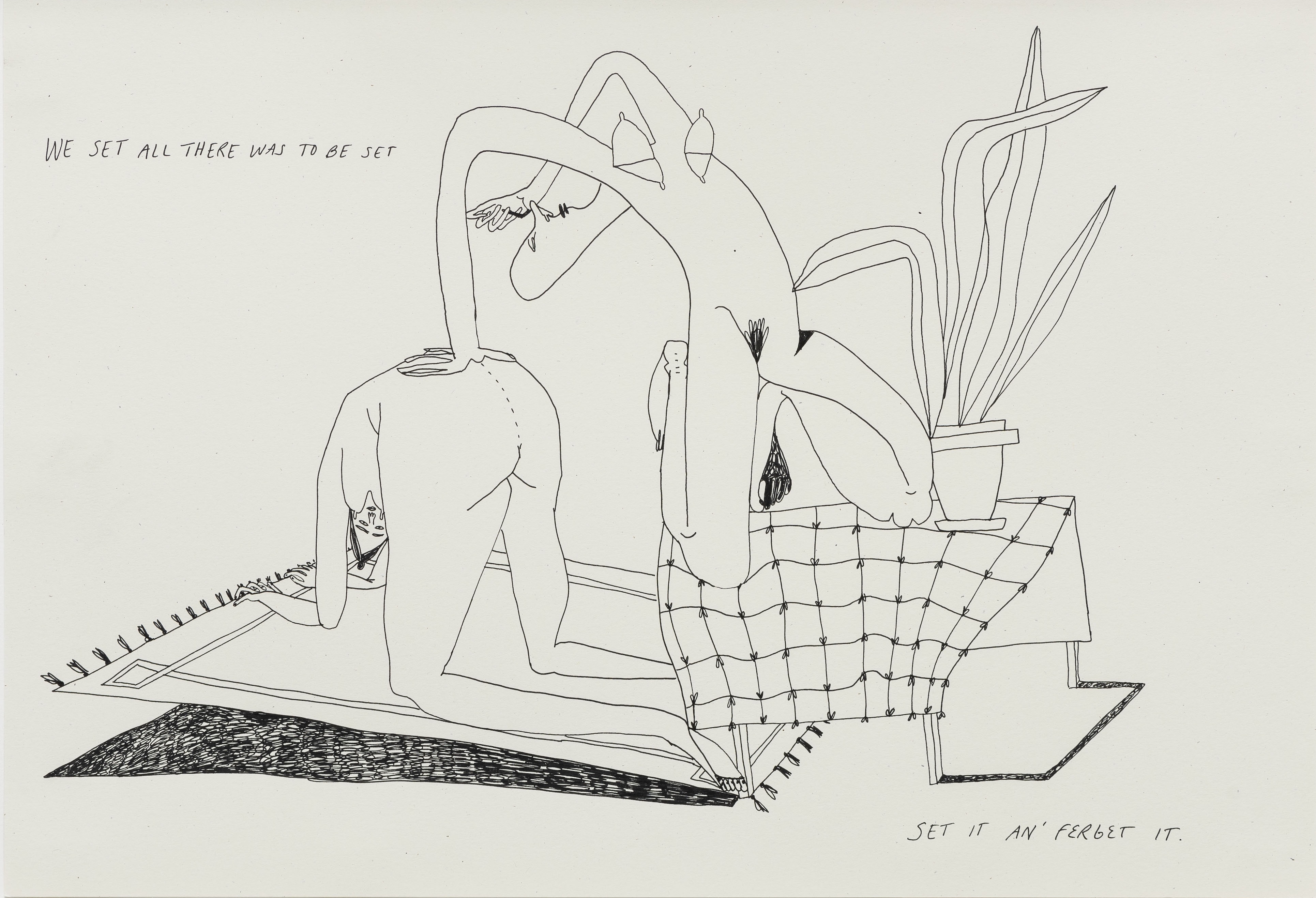
As Quarles points out, a painting can contain so many expectations; as one of the oldest forms of art, its history is long-established and totally entrenched. Quarles actively seeks to subvert what we have come to expect of a painting and makes us see what we have been trained to ignore—visually, her works chime harmoniously with her ideas. “I’m interested in how bodies can be inhabited by different forms of identity, whether that’s gender, race, sexuality.”
“Whiteness maintains this sense of power by being this blank state”
It was during her Yale days—she completed her MFA three years ago—that she also made a key discovery. “I had been confusing ‘vague’ and ‘ambiguous’; vague is when there’s too little information, and ambiguous is when there’s an excess, to the point legibility breaks down… that has been a helpful way for me to think about my work,” she explains. “There’s a tendency to assume that this fluidity and ambiguity is the ideal—there’s a trend right now towards seeing that as the ideal state—but having always lived in that state I know that it can be isolating and difficult; people need to fix things, to name things, and that disconnect can be a cause of grief,” she adds. “I feel I can only describe it through the flesh of the figures, made up of paint that’s crazy bright fuschia, orange, red, violet, gray… I literally bissect and fragment and cut these bodies into multiple sections.” She began to move from drawing on paper to painting on canvas in thick, washy, strokes, leaving areas of the canvas exposed and raw—which provoked strong reactions at crits. Creating jarring, glaring moments is something Quarles now excels at.
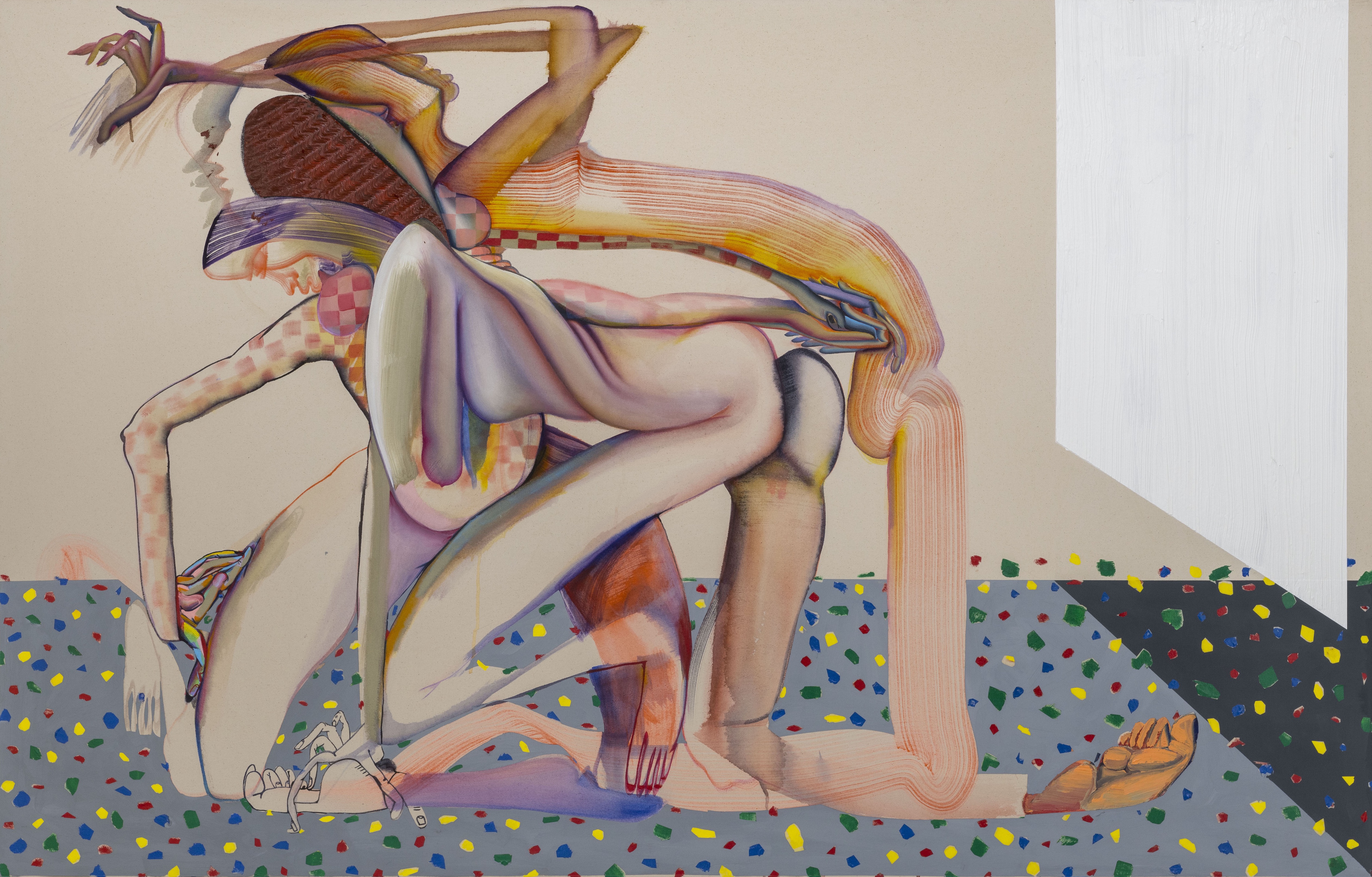
Even as an artist, Quarles does not quite fit—at least, not yet. “There’s a movement now of asserting a place of visibility, by painting the figurative, which is necessary because for so long it was white men painting everyone else,” she reflects. “My quest has always been to create something that’s not legible, to allow for a less linear read.”
In the quivering lines of her genderless, raceless forms—which share an ambiguous quality with Hepworth’s biomorphic sculptures—Quarles says she is searching for a “moment of solace and solidarity”. She doesn’t see that space as exclusive: “It’s not limited to being a biracial person, or a woman, or queer—the straightest whitest man still has aspects that exceed the container.” If there is any narrative to be made out in Quarles’s painted world, it’s that bodies contradict themselves, and they are rarely in sync with their surroundings. This is rich terrain for the artist. “I hope my work could be a moment to tap into that potential well of ambiguity.”
